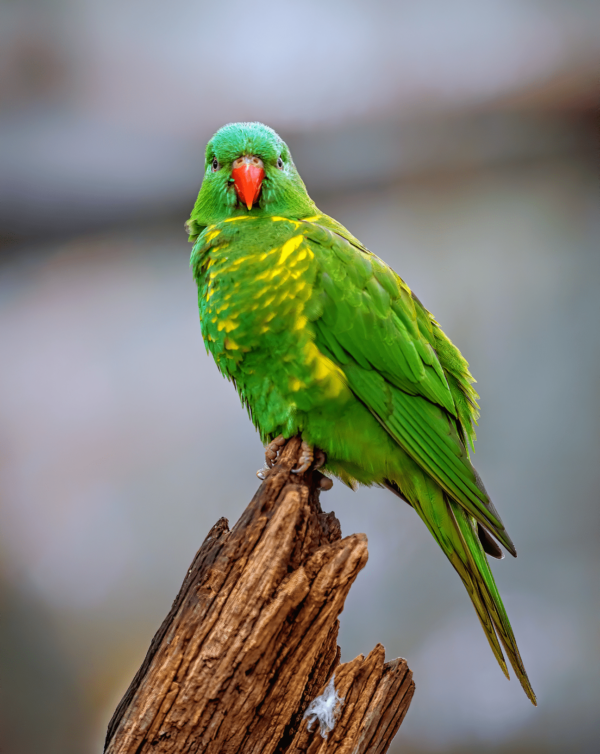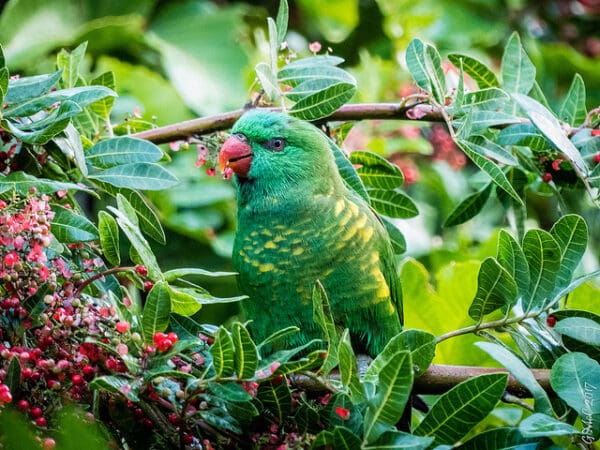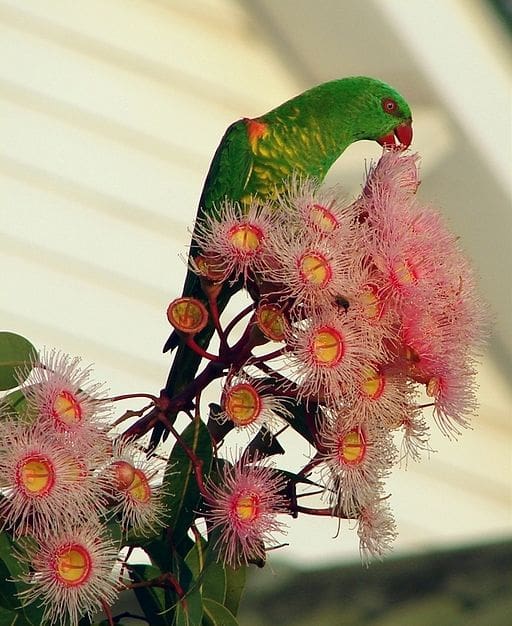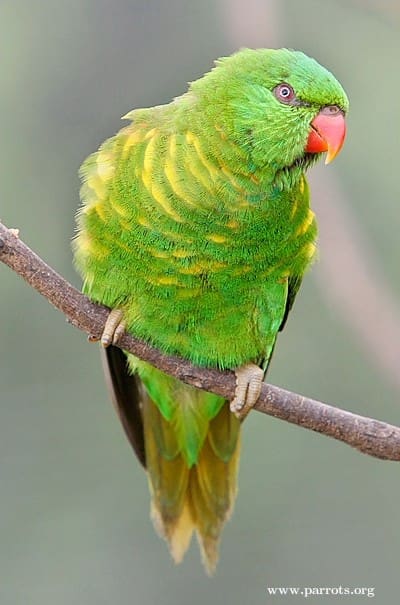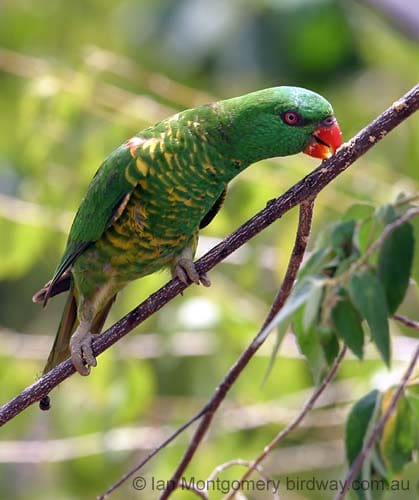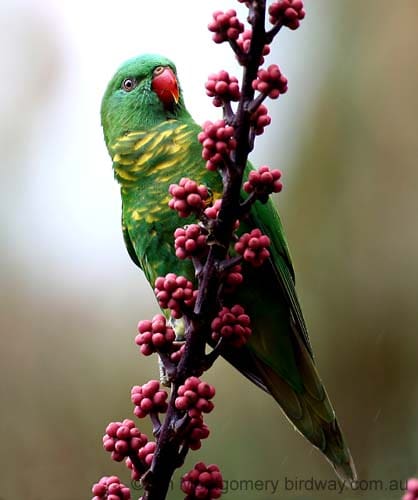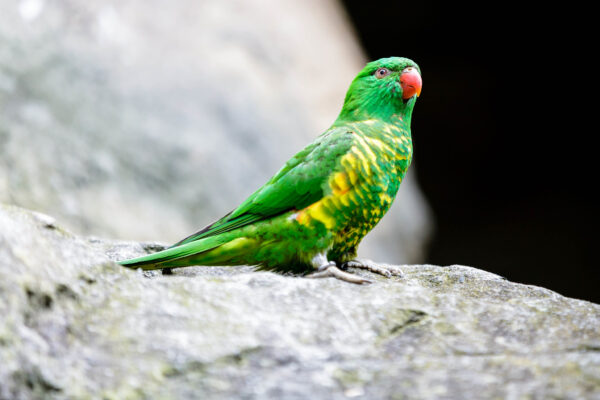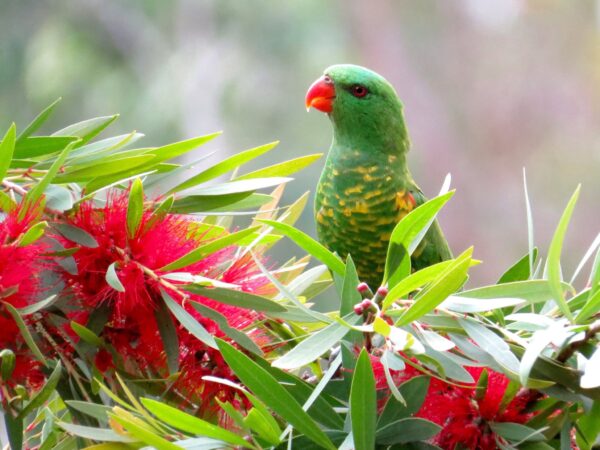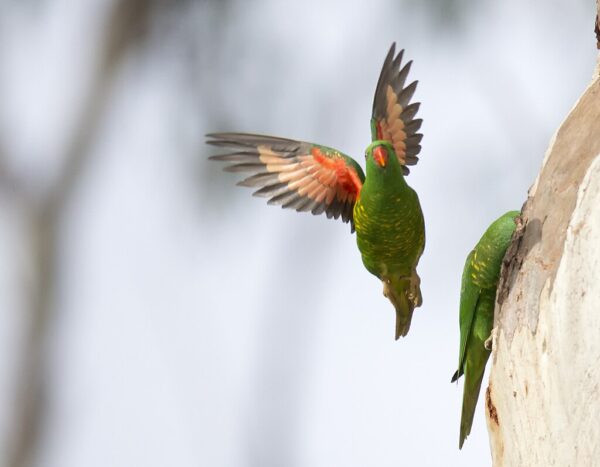Scaly-breasted Lorikeet
Also known as:
Green-and-gold Lorikeet, Greenie, Green Lorikeet, Scaly-breasted Lory, Green and Yellow Lorikeet, Green Keet, Green Parrot, Green Leek
Also known as:
Green-and-gold Lorikeet, Greenie, Green Lorikeet, Scaly-breasted Lory, Green and Yellow Lorikeet, Green Keet, Green Parrot, Green Leek
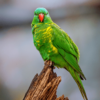
![© Pursuedbybear [CC BY-SA 2.0] via Flickr](https://parrots.org/wp-content/uploads/2023/01/wpt_Scaly-breasted-Lorikeet_1137-16-100x100.jpg)
![© Tatiana Gerus [CC BY 2.0] via Wikimedia Commons](https://parrots.org/wp-content/uploads/2023/01/wpt_Scaly-breasted-Lorikeet_1137-15-100x100.jpg)
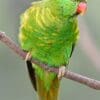
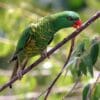
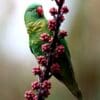
![© Darren Puttock [CC BY-SA 2.0] via Flickr A wild Scaly-breasted Lorikeet perches on a rock](https://parrots.org/wp-content/uploads/1990/11/Scaly-breasted-Lorikeet-Darren-Puttock-100x100.jpg)
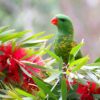
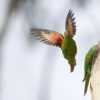
DID YOU KNOW?
Wild Scaly-breasted Lorikeets have hybridised with Rainbow Lorikeets.

Trichoglossus

chlorolepidotus
Size:
23 cm (9 in)
Weight:
75-95 g (2.6-3.3 oz)
Subspecies including nominate:
one
Colour Adult:
Both adults in general green with yellow scalloping on back of neck, mantle and breast down to flanks; orange/red underwing coverts and wide underwing band. Beak red. Eye ring dark grey. Eye orange/yellow.
Colour Juvenile:
As in adult but with less yellow scalloping; pale brown thighs. Medium brown beak. Grey/white eye ring.
Call:
Similar to Rainbow Lorikeet but higher in pitch.
More Information:
Content Sources:
CITES
BirdLife International
Cornell Lab of Ornithology/Birds of the World
A Guide to Parrots of the World, Juniper and Parr, 1998
Parrots of the World, Forshaw and Cooper, 1989.
Parrots of the World, Forshaw, 2006.
Parrots in Aviculture, Low, 1992.
Captive Status:
Rare outside Australia; small number in US and UK aviaries.
Longevity:
20-25 yrs
Housing:
Enclosure with drain in floor, or suspended cage over tiled or concrete floor.
Diet:
Nectar – a commercial type specially formulated for small species or a mix of baby cereal (lactose-free) and honey, malt extract or molasses, mixed with filtered water, made fresh once or twice daily, fresh fruit once or twice daily such as: apple, pear, orange, cactus fruits, bananas, kiwi and others, vegetables such as: carrot, corn on the cob, green leaves like Swiss chard, spinach or lettuce, rearing food made from hard-cooked egg, wholegrain bread and carrot, all ground to crumbly consistency.
Enrichment:
Boisterous, so needs space to move around; enjoys bathing, so provide overhead misters or shallow water bowls; if in tropical area provide eucalypt branches.
Nest Box Size:
Vertical box, 20 cm x 20 cm x 50 cm (7.8″ x 7.8″ x 19.5″).
Clutch Size:
2 to 3
Fledging Age:
8 weeks
Hatch Weight:
—
Peak Weight:
—
Weaning Weight:
—
World Population:
Unknown but reported as common, stable.
IUCN Red List Status:
Least Concern
CITES Listing:
Appendix II
Threat Summary:
Not globally threatened. Common in centre of range in SE Queensland and NE New South Wales where large flocks occur. Near north and south edges of range it becomes progressively rarer.
Range:
Found in NE Australia from Cooktown, N Queensland south to Illawarra district, E New South Wales. Feral Melbourne district, S Victoria.
Habitat:
Found up to 600 m (1968 ft); inhabits coastal Eucalypt woodland and forests, orchards and flowering street trees.
Wild Diet:
Diet includes flowers of Banksia, Callistemon, Melaleuca, Tristania, Eucalyptus tereticornis, E. pilularis, E. drepanophylla, C. viminalis and M. quinquenervia. Other food plants include Erythrina indica, Schefflera actinophylla, Pithecellobium saman, Grevillea robusta, Banksia serrata, Casuarina, grass trees of Xanthorrhoea and camphor laurel Cinnomomum camphora fruit.
Ecology and Behaviour:
Move in large noisy flocks, noisy while feeding but less conspicuous than Rainbow Lorikeet, with which it socializes.
Clutch and Egg Size:
2 to 3 ovate eggs, 26 x 19.5 mm (1 x 0.7 in).
Breeding Season:
May-February, in N of range related to rainfall; August, Victoria. Nest is in hollow limb or cavity high in tree.
Related Links:
—
